|
Beef cattle
in Texas
Cattle ranching existed in Texas on a small scale even before the Civil War. Texas Longhorn cattle are native to the southern part of the state. There was plenty of wide-open land for the animals to graze as they grew to full size. The problem was that there were more cattle than could be sold in Texas. With the building of new railroad lines into the West after 1865, the cattle industry suddenly had the opportunity to expand tremendously. The photo below shows a cowboy watching over a large herd of beef cattle in Texas. |
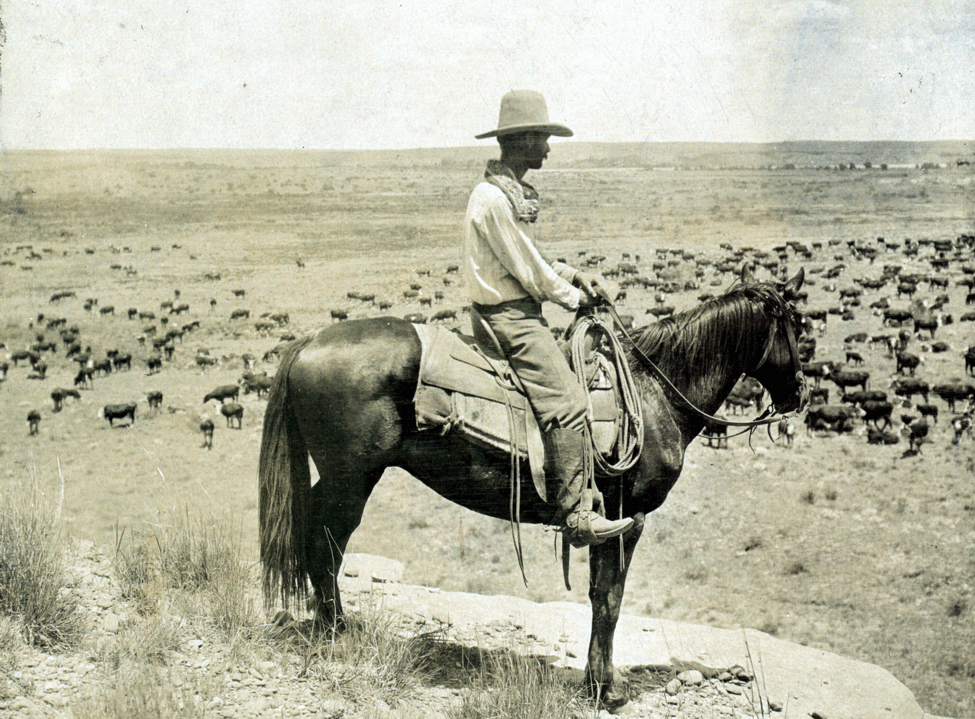
|
Railroads
were the key
The map below shows why the railroads reaching into the West created new opportunities for beef cattle raising. In Texas, cattle could be rounded up, then walked north hundreds of miles on cattle trails (green) such as the Chisholm Trail. The cattle drives up the trails ended at a cow town such as Abilene or Dodge City in Kansas. The cow towns sprung up along the railroad lines built into Kansas that connected to Kansas City and St. Louis. From there, cattle could be shipped to Chicago or other cities for butchering and sale. |
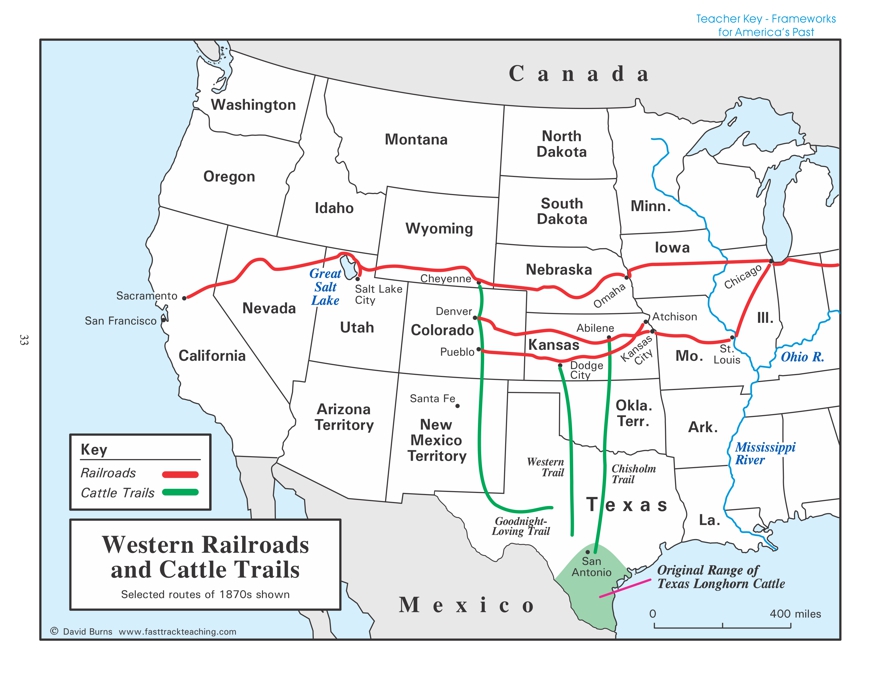
|
Getting
cattle to the railroad wasn't easy
Taking a herd of a thousand or more cattle up a trail was a long and difficult job for the cowboys. Finding water for the herd was critical. Sometimes there were gun fights with farmers who fenced off their land with barbed wire. The journey up the Chisholm trail took about two months, moving at about 15 miles a day. |
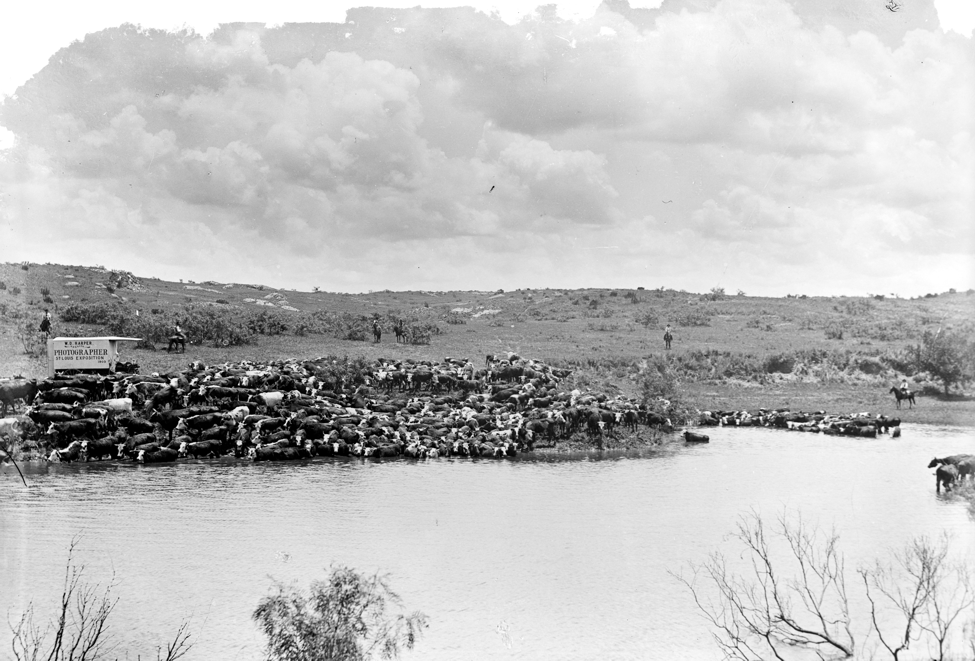
|
Load 'em up,
move 'em out!
This stereoscope photo card from 1867 shows the railroad line in Abilene, Kansas. As the herds of cattle reached the end of the trail, they were loaded onto the railroad cars and carried to Chicago. |
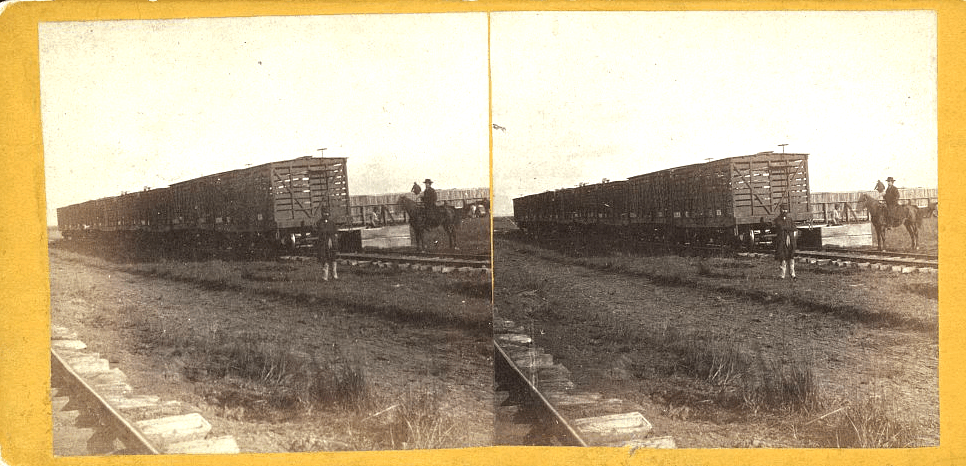
The end of
the line
in Chicago The old photo to the right shows a stockyard (a fenced area for cattle) outside a meat packing company in Chicago. "Meat packing" means killing the animals, cutting the meat into smaller parts, and then preparing the meat for sale to butcher shops and grocery stores. Armour became the most famous of the meat packing businesses in Chicago. It helped make the city a center of the meat packing industry in the U.S. The photo below shows how sides of beef from slaughtered cattle were prepared for shipment to grocery stores and butchers. |
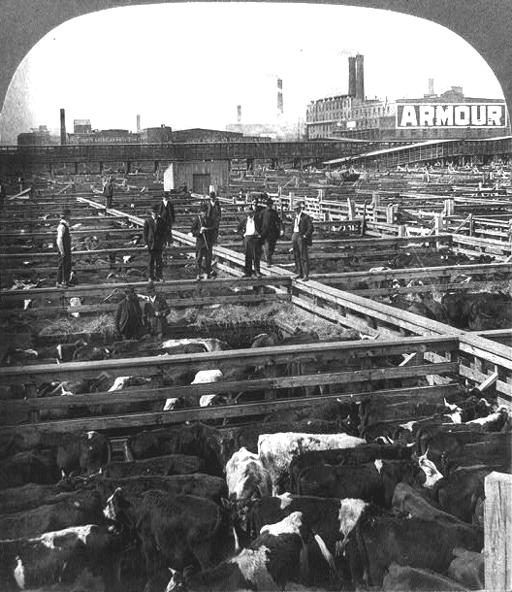 |
|
Refrigerated
railroad cars helped create
a national market for Texas beef Beef from Chicago meat packing companies was shipped to cities all over the country. Refrigerated railroad cars using ice were developed in the 1870s to keep the meat from spoiling. This helped create a national market for Texas beef. A cut-away drawing of a refrigerated railroad car is shown below. Notice the ice tanks at each end. |
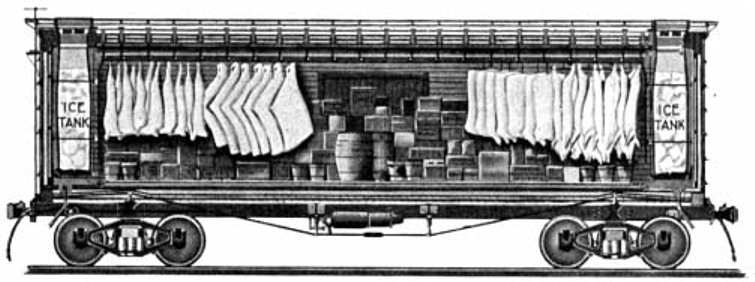
All photos are from the Library of Congress.
The railroad car drawing is from Wikipedia.
The map is by David Burns.
Some photos and images have been edited or resized for this page.
|
Copyright Notice
Copyright 2009, 2016 by David Burns. All rights reserved. As a guide to the Virginia Standards of Learning, some pages necessarily include phrases or sentences from that document, which is available online from the Virginia Department of Education. The author's copyright extends to the original text and graphics, unique design and layout, and related material. |